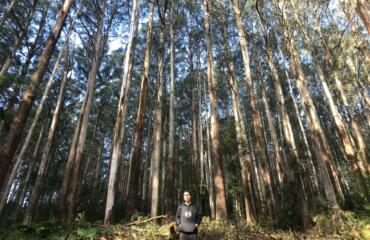
Vaccination has led to a worldwide plunge in polio infections, but cases are still occurring in poorer countries. PIC: World Health Organization
The move is designed to eliminate the possibility of infection caused by one of the types of poliovirus found in the oral polio vaccine.
Australia has not used the oral vaccine since 2005, but it is still used in developing countries because it is cheaper and easier to distribute.
Bruce Thorley, head of the WHO Polio Regional Reference Laboratory at the Doherty Institute in Melbourne, said that although the oral vaccine could cause cases of polio in rare circumstances, it was important for global eradication because it was cheaper, enabled wide coverage and did not require trained medical staff to inject the vaccine.

Polio can cause paralysis or other effects lasting decades after infection, and can be fatal. Infection occurs with one of three types of naturally occurring – or wild – poliovirus (types 1, 2 and 3) or after exposure to special weakened forms of the three types of virus in the oral vaccine.
In 2015, the World Health Organization declared wild type 2 poliovirus eradicated, but a small number of infections are still caused by the weakened type 2 virus in the oral polio vaccine or OPV, according to Dr Thorley.
“The [oral polio vaccine], in rare circumstances, can cause polio, and it’s considered this occurs in about one in every 2.7 million first doses of the oral vaccine, and that’s because it contains a live virus.”
He said the 12 cases of vaccine-derived type 2 polio in 2015 were in countries with low vaccination rates – Guinea, Myanmar, Nigeria and Pakistan.
Although Australia no longer used the oral vaccine, Dr Thorley said people should continue to maintain scheduled vaccinations with the injectable inactivated poliomyelitis vaccine (IPV), which protects against all three types of poliovirus.
Polio in Australia
► 400,000 cases
► 40,000 cases with paralysis
► 2000 deaths
► 1950s – Polio vaccine introduced
► Early 1970s – Last case of infection in Australia
► 2000 – Australia certified polio-free
► 2005 – Oral vaccine replaced by injected inactivated polio vaccine
► 2007 – Last case of imported polio
► 2009 – June Middleton dies after 60 years in an iron lung
Source: WHO, Polio Australia, Dr Thorley
Dr Thorley said WHO declared Australia polio-free in 2000, but Australians were still at risk from people infected overseas.
“Since the 1970s, we’ve had single cases [of polio brought from another country] and the most recent reported imported case was in 2007.”
The WHO-coordinated global “switch” in vaccine use will take place over the two weeks to May 1.
Dr Thorley said countries would switch from using oral vaccines containing types 1, 2 and 3 poliovirus (known as trivalent OPV) to an oral vaccine containing only types 1 and 3 (bivalent OPV). Countries currently using OPV would destroy any remaining stocks of trivalent OPV.
“This is a significant step because the WHO has had to negotiate with vaccine manufacturers so they can start producing enough bivalent OPV and also produce enough IPV . . . All countries will administer one dose of IPV by the time we have the switch so people will be protected against type 2.”
The WHO polio vaccination program has led to a dramatic fall in polio cases from 350,000 in 1988 to just 74 in 2015, all caused by wild type 1 poliovirus in Pakistan and Afghanistan.
Wild poliovirus attacks the nerves and causes paralysis within hours in one-in-100 people infected. There is no cure for the disease, known as poliomyelitis, and only immunisation against all three types of poliovirus offers full protection.
Gillian Thomas, vice-president of Polio Australia, said poliovirus circulating in Australia (endemic) is thought to have infected approximately 400,000 people between the 1920s and the early 1970s, with about 40,000 people paralysed.
She said people with few early symptoms could nevertheless suffer “late effects of polio” decades later. Symptoms can include fatigue, muscle weakness and pain, joint pain, breathing difficulties and nerve problems.

She said Australia introduced vaccines in the 1950s and so most of the people suffering the late effects of polio tended to be older Australians.
Ms Thomas, 66, contracted paralytic polio in 1950 at 10 months of age. Although she was eventually able to walk using two full-length calipers, the late effects of polio had severely restricted her movement.
“Polio affects both my legs and one arm,” she said. “I thought my right arm got away without damage but with the late effects, it’s obvious that it has been affected. So, basically, it’s attacked all my limbs; so I use a wheelchair now.”
Ms Thomas said the 400,000 people infected would suffer late effects of polio, making this the largest group of people with a disability in Australia. Polio Australia had set up the Australian Polio Register and is holding a conference in September to help raise awareness.
People more than 65 years of age did not have support through the National Disability Insurance Scheme and needed to rely on lesser levels of financial assistance through aged care programs.


